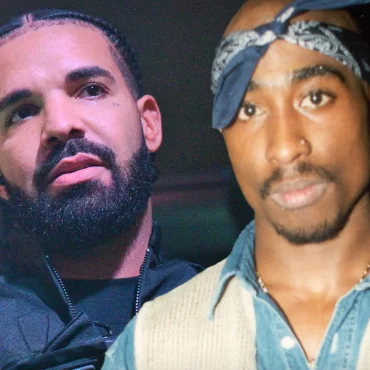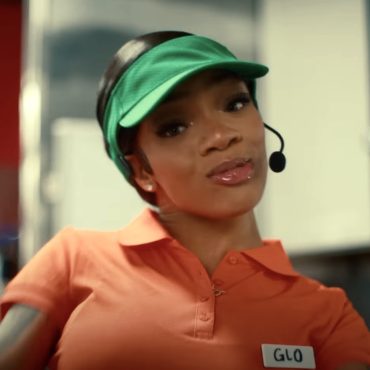Is this music actually good, or is it just a prank?
After a decade-plus of solidifying into its own particular niche and musical language, underground online-centric rap music is in the midst of a tonal shift. Viral artists like Yuno Miles, LAZER DIM 700, and Edward Skeletrix have embraced a combination of noisy production and ironic lyrical performances in a way that parallels the biggest tonal experiments of punk rock while building the genre’s own unique sounds.
But unlike the rock music of a previous era, contemporary rap exists in an algorithmically-defined world of views and clicks, where success, especially for independent artists, is dependent on viral attention. The aforementioned artists have all had viral moments for being outlandish, but there’s an essential question at the core of their music of whether their experimentation is a deliberate attempt to expand the boundaries of their art form, or merely just a way of gaining clicks. Like the novelty songs of the 1950s and ‘60s, these gimmick-driven tracks feature attention-grabbing lyrics and sounds, but could end up similarly forgotten compared to mainstream “serious artists.”
Yuno Miles
Yuno Miles is one of the most original and prolific of this new generation of comedic, chaotic rappers — one with enough of a consistent vision that even when his music is a prank, it might actually be good.
While he emerged in 2021, Yuno Miles is far from the first experimental rapper with a unique flow to blow up on TikTok. His high-pitched delivery has a similar tone to artists like 645AR, whose “squeak rap” vocals earned him plenty of attention in 2019, eventually leading to a deal with Columbia Records. However, while 645AR utilizes his falsetto voice in service of more traditional rap flows, Yuno Miles takes the quirky, meme-y qualities of his delivery and unites them with contemporary underground production and an intentional lack of rhythm.
“Indiana Jones,” one of his most immediately and enduringly popular songs, is a minute-long chunk of arhythmic, jumpy bars, each ending with a warbling, bleated falsetto punchline. “Martin Luther,” a more recent viral smash, replaces the falsetto with orca-like noises as Yuno slant-rhymes the names of Civil Rights leaders. And “4 Wheeler,” his most popular song with over 10.4 million Spotify streams, combines the ridiculous qualities of both, as the song’s first line ends with a harsh racial slur delivered in comedic falsetto.
The combination of content and delivery is bound to attract negative attention. But instead of dispelling it or letting others mock him, a great portion of Yuno Miles’s viral success comes from his willingness to make fun of himself.
Instead of promoting his music earnestly on TikTok, Yuno Miles often mocks his own music, or even acts like it was made by somebody else, with captions like: “my grandson not making it” “he rapping like he about to cry,” “bro can’t be serious,” or even, simply “diddy type music. It’s a pattern that has brought him consistent success through multiple viral eras: by presenting his own music as an ironic oddity, he reaps the benefits that come from both making and mocking his own music.
Yuno Miles has managed to stay relevant by attaching parody songs to big viral moments. He remixed Kendrick Lamar’s “Not Like Us” as a Kai Cenat disstrack, which spawned a heated reaction from the popular streamer. But while there are no questions about his ability to go viral through his comedy, this constant ironic appraisal of his own music, and the undercutting that comes with it, could make it difficult for him to attempt to transition out of this comedy-rap falsetto tone. While there are comments under his more earnest pop-rock tunes that say “Yuno unironically has hidden potential” or “why is this actually good tho,” recent pop songs like “Like What,” “Hit Our Dance,” and “Want It To Be Over” have streaming numbers several orders of magnitude below his biggest hits — at 63k, 50k, and a low 3.6k streams, respectively.
While Yuno Miles has consistently gone viral for combining underground beats with bizarre lyrics and delivery, it’s yet to be seen whether his more serious attempts at pop music will reach the same level of audience. However, while the Spotify numbers may be low, a teaser for his unrealeased song “Boston” broke through with over 180k likes on TikTok. It’s telling, though, that he plans to release it under a different name — “Money Miless” instead of Yuno.
LAZER DIM 700
If Yuno Miles was the comedy rap sensation of last year who has sustained himself with continued ridiculousness, LAZER DIM 700 is today’s souped-up, turbo-charged version.
His signature sound features out-of-rhythm run-on sentences delivered with heavy Atlanta inflection, but often recorded with an intentionally lo-fi quality — to the point where it often sounds like the vocal track is slapped on top of the beat without any sense of mixing or cohesion. His beats tend towards the eerie, violent, and blown-out, often featuring dark, atonal melodies combined with head-hurting 808s. The bars themselves are often chaotic and Byzantine, delivering traditional punchlines as well as lyrics like “Hit him in the forehead we find out his head swellin’ up like that boy finna turn to a pony,” a sentence he somehow manages to fit within a single 4/4 bar on “Tony Dim.”
While he delivers the kind of off-kilter flow and punchline-heavy bars seen in other underground rappers straddling this line between comedic and serious, he does so without the obviously comedic inflection seen from Yuno Miles. Instead, part of the appeal is how natural and breathless LAZER DIM seems as he delivers his lines, as if they’re coming right off the top of his head.
He has blown up within the past year, first from users all over social media that called attention to his strange inflection (the line “trap so old gotta run out my house when I play my music so the roof don’t fall on me” became an immediate fixture of online memes), and subsequently with support from underground rap blogs and even mainstream publications like Pitchfork.
But while his sound seems perfectly timed for the current moment — to the point where even mainstream publications have to pay attention — this isn’t LAZER DIM’s first shot at viral music fame.
LAZER DIM 700’s music from before 2024 has a similar low-budget feel, but instead of aiming for an off-kilter flow and comedic tone, the songs are more standard drill material, with lyrics and delivery that fit in the more traditional zones of Atlanta hip-hop. While they’re not bad on their own, these records failed to gain the immediate viral heat of LAZER DIM’s later songs. “I was just happy if 200 people liked my shit,” LAZER said in an interview with Kids Take Over. Now, LAZER DIM has more than 200 thousand people following him on Instagram (and his original account, which seems to have been deleted recently, had half a million).
Between 2022 and 2023, he released albums The World Is Yours, hot streak, 8890, and DISASTER. None of the songs on these albums broke the coveted million-plays mark, and most, even after his rise in popularity, even hit 100k streams on Spotify.
Lazer’s first properly viral singles “Floyd,” “Treacherous,” and “tony dim” all came out on December 10 and 11 of last year, and they mark a relative shift in LAZER DIM’s tone and approach, veering more towards the arrythmic tone and absurd lines that mark his current viral sound. With the release of his full-length album Injoy in March, LAZER DIM completed his tonal shift, presenting an entire album that synthesizes the aggressive production and odd punch-in flows he performs.
As critic Alphonse Pierre states in his Pitchfork coverage of LAZER DIM, it’s very possible that he could become just “another viral internet rap phenom, thrust into the spotlight and forced to speed run an entire career in months.” However, unlike his underground comedy-rap predecessors, LAZER DIM 700 already has a track record of changing his sound to find success. However, while he’s on top of the world right now, even he expresses some doubts over his future. “I feel like I’m gonna be ass next year,” LAZER DIM joked in an interview with Kids Take Over.
Edward Skeletrix
While both LAZER DIM 700 and Yuno Miles cultivated viral fame and consistent audiences by approaching abrasiveness with humor — intentional or otherwise — Edward Skeletrix uses a similar sonic palette to conjure darker and more horror-inflected tones.
Edward Skeletrix emerged on the scene last year as a sort of dark reflection of hip-hop’s current underground, utilizing early stable diffusion models to create uncanny AI visuals that fit with the dark, murky, and strange contents of his music.
While the other artists mentioned so far style themselves as traditionally charismatic emcees despite the oddball elements of their music, Edward Skeletrix went viral by intentionally obscuring his personality. His voice is chopped and manipulated on tracks to feel non-human, his early use of AI visuals made it hard to pin down his exact, real-life look at first, and his pattern of deleting his posts on Instagram and TikTok builds a sense of mystique and “aura” around his personality.
However, while the visuals conjure a different feeling, the production at the heart of albums like Skeletrix Island features TikTok-influenced underground beats that wouldn’t be out of place on a Yuno Miles or LAZER DIM 700 song. Despite Edward Skeletrix’s emphasis on the strange and uncanny, because of his sonic content and his social media presence, his primary audience clues into that same ironic tone and style.
Because Edward Skeletrix built a following by using AI to create uncanny visuals, TikTokers who make comedic AI-edits (of, for example, the Costco Guys, or old Vines) often tag their videos with “skeletrix island” drawing direct parallels between their own intentionally comic visuals and the darker, more intentionally distressing versions coming from Edward. Since his emergence on the scene with several videos in February, “skeletrix island” has become shorthand for a certain style and tone of AI videos — one that quickly becomes imbued with a sense of irony.
While Edward Skeletrix’s visuals made “skeletrix island” a trend on TikTok, this hasn’t translated to a similar impact on streaming services. His more serious and experimental music does not engage with as large an audience as the more comedic artists, and he is yet to have a song with over a million streams.
Edward Skeletrix’s insistence on maintaining a dark tone helped establish his reputation as a serious, dark artist, but may limit his ability to break out in the future. While Yuno Miles and LAZER DIM 700 may have to get more serious in order to build staying power outside of the meme-space, Edward Skeletrix may have to embrace tones and styles outside of the darkness in order to build a similarly large audience.
An Instagram teaser for his newest upcoming album shows a potential shift in tone: half-goofy pictures of Edward Skeletrix, wide-eyed, playing table tennis, with a caption announcing a new album “out now on all platforms.” This is a lie. Instead, in another semi-serious, semi-trolling moment, the album will (possible) be sent to fans who text Edward Skeletrix, before dropping everywhere on August 18. Whether the music is worth the trouble is yet to be seen — but one can hope.
There’s no consistent formula for gaining viral popularity, and there’s even less of a playbook for sustaining it. Despite its dominance in certain circles of the internet, the underground Soundcloud rap scene isn’t exactly a place for sustainable career growth, and the past decade is littered with artists who attempted to fuse humor and experimental hip-hop into something new — from Ugly God and Lil B to Reptilian Club Boyz or 645AR. It’s the immediacy and transitive nature, the disposability of the modern music model, that gives these artists the biggest challenge in sustaining a career.
There is good music and deliberate, challenging art coming from each of these artists, even if you have to look hard to find it. However, the immediate feedback of social media, the exponential scale of its viral peaks, and the minuscule pay from streaming services makes it financially and artistically prudent for these artists to attract attention in any way possible — even when it’s negative, ironic, or at the price of the music itself. As payments from streaming services get lower and lower, forcing more artists to play the attention game in order to seek viral fame, the line between music that is good and music that’s fundamentally a joke will continue to blur. It’s up to the artists — and the audience — to see if the music will sustain past the initial attention grab.
Visualizations by Nicki Camberg and Sarah Kloboves, and cover image by Crasianne Tirado. Data as of Aug. 2, 2024.


































ytdfp.com on June 4, 2025
I’m extremely impressed together with your writing talents and
also with the layout on your blog. Is this a
paid topic or did you customize it yourself? Anyway keep up the nice high quality writing, it’s rare to look a nice weblog like this one today..